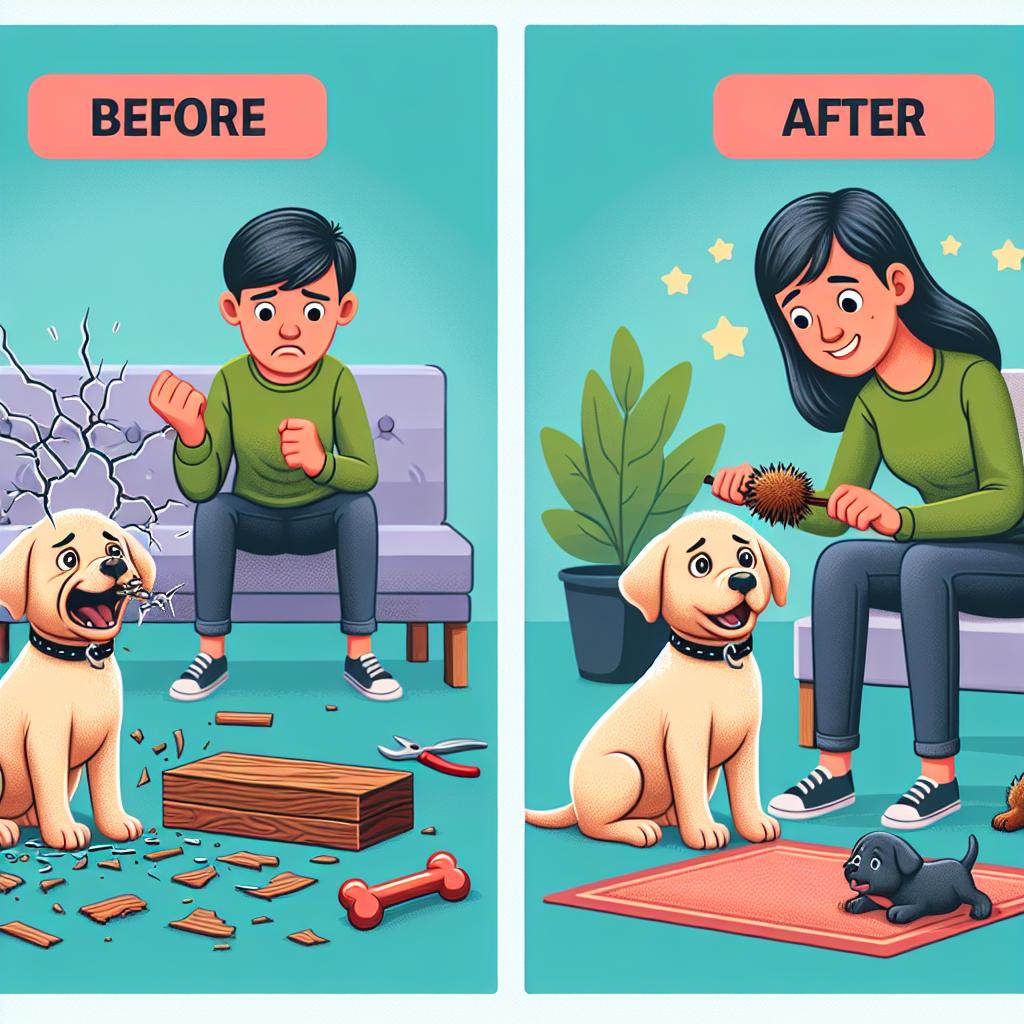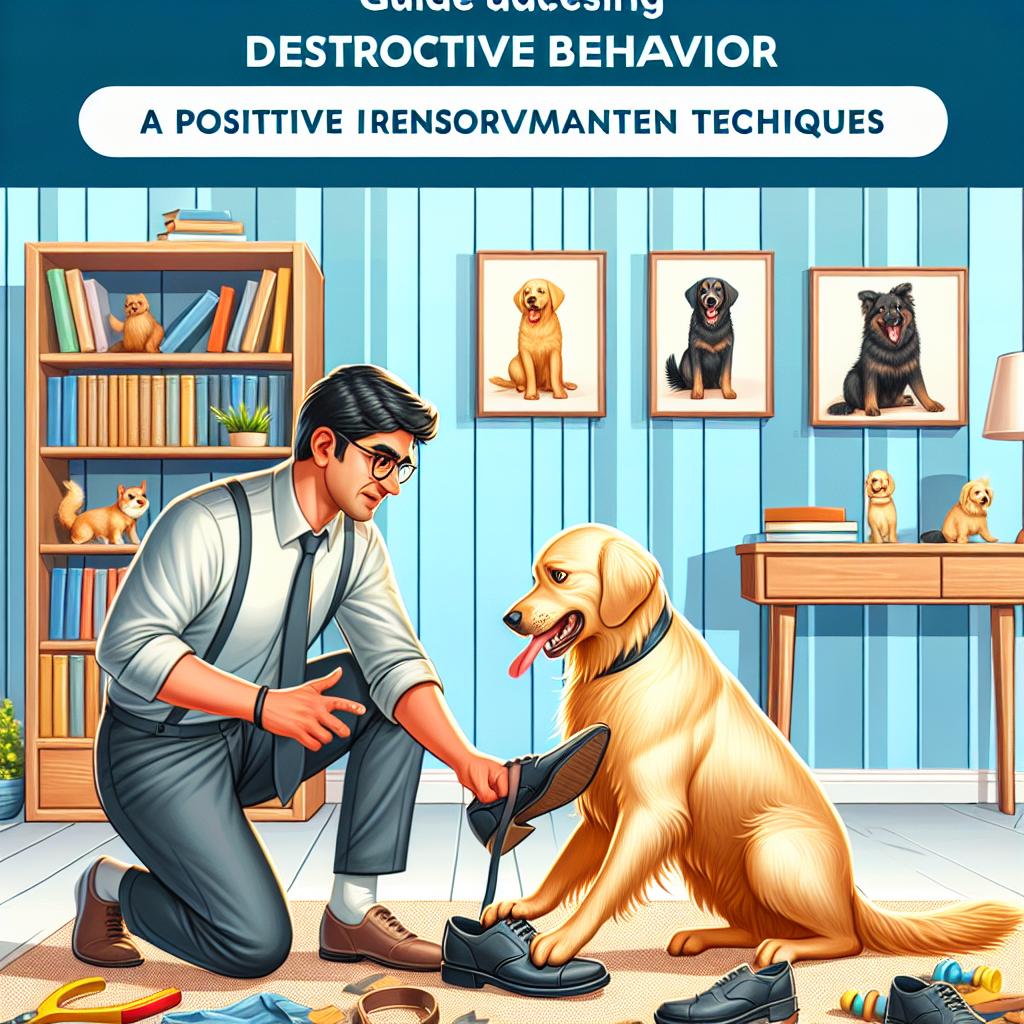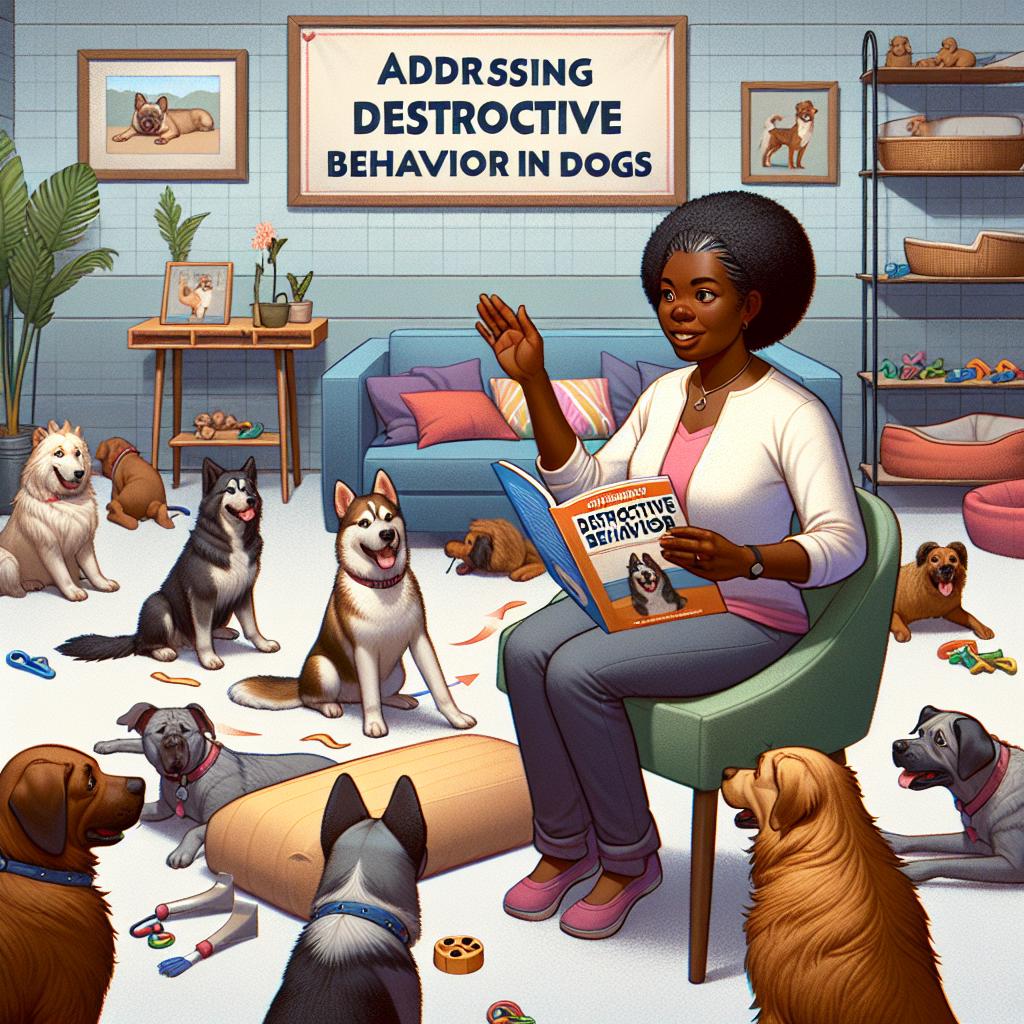Addressing Destructive Behavior in Dogs: Understanding the Root Causes
Dogs are often celebrated as loyal companions, capable of bringing joy and comfort into our lives. However, for many dog owners, the serenity of pet ownership can sometimes be overshadowed by bouts of destructive behavior—chewed furniture, gnawed shoes, and shredded household items become frustrating realities. Understanding why our furry friends engage in such behaviors is essential in transforming our homes back into havens of peace. In this article, we will explore the various factors contributing to destructive behaviors in dogs, from boredom and anxiety to unmet needs. By identifying the underlying causes, we can not only mitigate the damage but also strengthen the bond between human and canine, paving the way for a happier, more harmonious coexistence. Join us as we delve into effective strategies and insights that can lead to a better understanding of our four-legged companions and promote healthier, more positive behaviors.
Understanding the Root Causes of Destructive Behavior in Dogs
To effectively tackle destructive behavior in dogs, it’s crucial to delve into the root causes that may be fueling such conduct. Various factors can contribute to this behavior, including boredom, anxiety, frustration, and lack of training. Dogs are naturally curious and active creatures; when their environment doesn’t provide enough stimulation, they may resort to chewing furniture, digging up the yard, or similar destructive actions as a way to entertain themselves. Additionally, separation anxiety can lead dogs to act out when left alone, resulting in significant distress and often, destructive behaviors.
Understanding these underlying issues is the first step toward resolving them. Owners should consider these potential triggers:
- Insufficient Exercise: Dogs require daily physical activity to expend their energy.
- Lack of Socialization: Limited interaction with other dogs and people can heighten anxiety.
- Inconsistent Training: Without clear guidance, dogs may become confused about acceptable behavior.
| Behavior | Possible Cause |
|---|---|
| Chewing | Boredom or Teething |
| Digging | Curiosity or Stress |
| Barking | Frustration or Need for Attention |
By identifying these causes, owners can better strategize how to enrich their dog’s environment and provide the necessary support to mitigate destructive tendencies.
Effective Training Techniques to Mitigate Destructive Habits
To effectively reshape destructive behaviors in dogs, it is essential to utilize training techniques that not only engage the canine mind but also reinforce positive habits. One of the most beneficial approaches is positive reinforcement, where rewarding good behavior with treats, praise, or play strengthens the desired actions. For instance, if your dog refrains from barking unnecessarily, offering a treat or affectionate praise immediately helps them associate silence with a positive outcome. Providing consistent feedback is crucial; dogs thrive on structure and clarity.
Incorporating mental stimulation into training not only keeps your dog entertained but also helps relieve anxiety, which often leads to destructive actions. Techniques such as interactive toys, obstacle courses, and nose work games can significantly enhance their focus and reduce unwanted behaviors. Additionally, you can schedule regular socialization opportunities with other dogs and people, as this exposure brings about confidence and calmness. Below is a simple guide to some effective techniques:
| Technique | Description |
|---|---|
| Positive Reinforcement | Rewarding desired behaviors with treats or praise. |
| Interactive Toys | Engaging toys that promote problem-solving skills. |
| Obstacle Courses | Physical activities that promote agility and focus. |
| Nose Work Games | Activities that engage a dog’s sense of smell. |

Creating an Engaging Environment for Your Canine Companion
Creating a stimulating and enjoyable space for your dog is key to curbing destructive behaviors. When dogs are mentally and physically stimulated, they are less likely to engage in unwanted activities that can lead to property damage or accidents. Consider incorporating interactive toys and puzzle feeders to challenge their minds, as well as allocating time for activities such as agility training or scent work. Establishing a safe play area inside and outside your home will give your pup a space to unleash their energy without potential harm. Here are some ideas to enhance your dog’s environment:
- Designated play zones: Use space effectively, with safe areas for toys and activities.
- Rotating toys: Keeping a handful of toys accessible and rotating them keeps your dog’s interest piqued.
- Socialization opportunities: Regular interactions with other dogs and people promote healthy behavior.
- Daily routines: Establish predictable outings for walks or play, reinforcing positive habits.
Creating a positive atmosphere for your furry friend not only reduces destructive tendencies but also strengthens the bond you share. The investment in time and resources pays off in a well-adjusted pet who knows how to channel their energy positively. Consider the following table that outlines different types of activities and their benefits:
| Activity | Benefits |
|---|---|
| Interactive Play | Enhances physical fitness and mental stimulation. |
| Training Sessions | Improves obedience and reinforces positive behavior. |
| Outdoor Adventures | Provides socialization and reduces boredom. |
| Scent Games | Stimulates natural instincts and boosts confidence. |

Establishing Consistent Routines to Promote Positive Behavior
Implementing a structured daily routine is pivotal in curbing destructive behaviors in dogs and fostering a sense of security. When canines know what to expect throughout the day, they are less likely to act out due to anxiety or confusion. Focus on incorporating the following elements into your dog’s routine:
- Regular Feeding Times: Consistent meal schedules help regulate your dog’s digestion and energy levels.
- Daily Walks: Set aside specific times for regular exercise to help your dog release pent-up energy.
- Training Sessions: Short, daily training exercises reinforce good behavior and mental engagement.
- Playtime: Dedicate time for interactive play to strengthen your bond and provide a healthy outlet for energy.
- Rest Periods: Ensure your dog has designated quiet times to relax, promoting a calm demeanor.
To further strengthen this routine, maintaining a clear structure during these activities is essential. Consider using a visual schedule that includes specific times and activities, helping your dog to anticipate what comes next. Here’s a sample daily schedule:
| Time | Activity |
|---|---|
| 8:00 AM | Breakfast |
| 9:00 AM | Morning Walk |
| 10:00 AM | Training Session |
| 12:00 PM | Playtime |
| 2:00 PM | Afternoon Nap |
| 5:00 PM | Dinner |
| 7:00 PM | Evening Walk |
| 9:00 PM | Quiet Time |
Q&A
Q&A: Addressing Destructive Behavior in Dogs
Q1: What are some common signs of destructive behavior in dogs?
A1: Destructive behavior can manifest in various ways, including excessive chewing, digging, scratching, or ripping up furniture and household items. You might also notice your dog tearing apart shoes or being excessively vocal when left alone. These actions can stem from boredom, anxiety, or a lack of training.
Q2: What typically causes dogs to engage in destructive behavior?
A2: There are multiple reasons a dog might display destructive tendencies. Common triggers include separation anxiety, insufficient physical or mental stimulation, lack of training, and instinctual behaviors, such as digging or chewing. Understanding your dog’s specific motivation is key to addressing the behavior effectively.
Q3: How can I determine if my dog’s destructive behavior is a sign of a deeper issue?
A3: If your dog’s destructive actions occur frequently or are severe (like injuring themselves or causing significant property damage), it may indicate an underlying issue. Signs to look out for include changes in appetite, excessive barking, or withdrawal from activities they once enjoyed. Consulting with a veterinarian or animal behaviorist can help clarify the situation.
Q4: What are some strategies to prevent or reduce destructive behavior?
A4: Start by ensuring your dog gets adequate physical exercise every day. Long walks, playtime, and interactive toys can help curb boredom. Additionally, providing mental stimulation through training sessions or puzzle toys can redirect their energy. Never forget the importance of positive reinforcement—reward desirable behaviors to encourage good habits!
Q5: Can training help mitigate destructive behavior?
A5: Absolutely! Training is one of the most effective tools to address destructive behavior. Teaching commands like “leave it” or “no” can be invaluable. Crate training can also provide a secure space for your dog when unsupervised, teaching them boundaries and giving you peace of mind. Consistency and patience in training will yield the best results.
Q6: Is it ever too late to change a dog’s destructive behavior?
A6: It is rarely too late to make positive changes. Dogs can learn at any age, though the approach may differ. Older dogs may require more reinforcement or adapted strategies. What’s important is being persistent and understanding that change takes time—a compassionate approach combined with appropriate techniques will encourage your dog to learn better behaviors.
Q7: Are there any specific products that can aid in managing destructive behavior?
A7: Yes, there are various products designed to help manage destructive behavior, including chew-proof toys, bitter-tasting sprays for furniture, and anxiety-reducing items like snug-fitting wraps or calming treats. Also, consider investing in engaging toys that promote mental stimulation, which can divert your dog’s attention from destructiveness.
Q8: When should I consider professional help for my dog’s destructive behavior?
A8: If your efforts to manage destructive behavior aren’t yielding results and your dog’s actions are causing harm to themselves or others, seeking professional help is wise. A certified dog trainer or animal behaviorist can provide tailored strategies to address the specific issues at hand, ensuring both you and your dog can enjoy a harmonious living environment.
Conclusion: Addressing destructive behavior in dogs is a challenge many pet owners face, but with understanding, patience, and the right strategies, it’s certainly manageable. By focusing on the root causes and implementing preventative measures, you can help your furry friend thrive—without turning your home into a chaotic playground!
Insights and Conclusions
addressing destructive behavior in dogs is not just about mending a torn couch or salvaging a pair of shoes—it’s about forging a deeper connection with our furry companions. Understanding the roots of such actions allows us to respond with patience and empathy, transforming challenges into opportunities for growth. As we embark on this journey together, armed with knowledge and commitment, we pave the way for a harmonious home where our dogs can thrive, learn, and express their boundless energy in constructive ways. Remember, every setback is a stepping stone towards a brighter, more fulfilling relationship. With guidance and love, we can turn the tide on destructive behaviors, fostering a safer environment for both our pets and ourselves. Let us embrace this endeavor, for in nurturing their needs, we uncover the true joys of companionship.

